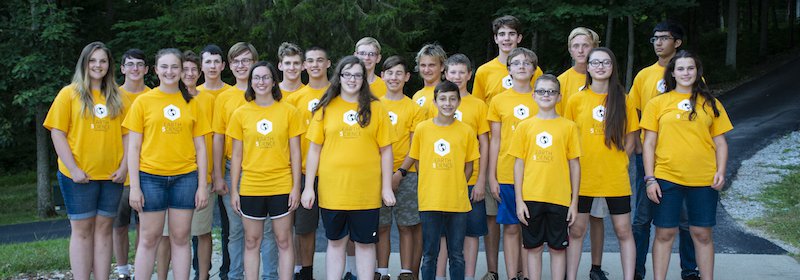
A Look Back at Earth STEM Camp
Article Header
« Return to Main PageA Look Back at Earth STEM Camp
Our theme this year for Ci 5.0 was earth science and many of our STEM activities were structured around that theme. And, of course, we had our Ci staples—robotics, a tour of the Creation Museum and a secular museum, a trip to the Ark Encounter, zip line rides, delicious food, and accommodations at beautiful Potter’s Ranch.
Here are some of the STEM activities campers enjoyed:
1. Global Warming – Campers learned to use terminology about global warming and climate change correctly. They are now able to discuss the topic from both a biblical and secular worldview. Using a data set, they created a graph and analyzed it to find a trend. This activity enabled the campers to see that data can tell a trend but not a cause and to understand that a biblical worldview may not have all the answers yet.
2. Ice Age – Through a scavenger hunt, campers discovered what an ice age is and what causes an ice age. They explored the necessary conditions for an ice age, the possibility of an ice age after the Flood, and what old earth scientists teach regarding ice ages. They also dug into what God’s Word says in support of an ice age after the Flood.
3. Fossils – Campers discovered what a fossil is, how they are formed, and the basics of fossil classification. They headed outside to search for, collect, and identify local fossils. As they learned about and dug up their own fossils, they contrast the old earth and young earth worldviews regarding fossils and their formation.
4. Plastics – For this hands-on activity, the campers’ goal was to determine a good, low-cost compostable way to make a biodegradable fork. Campers used up to three different substrates: one plant-based, one animal-based, and possibly one algae-based. They created and tested a group of mixtures and then proposed a new mixture to make the fork.
5. Waves – Using a wave tank, campers investigated the relationship between wave velocity and water depth, using an equation to determine if the data they collected was correct. This equation allowed them to determine the time it would take a tsunami departing from Seward, Alaska to reach two other cities. Will this information allow the campers to warn the cities before the tsunami arrives?
6. Earthquakes – Drawing on the earthquake in Haiti, the campers investigated earthquake waves. Combining innovation and creativity in engineering, they attempted to design a two-story building that can hold up to 1000 grams of sand and remain standing through a major earthquake. Campers also designed a seismograph that was used to detect and possibly measure the earthquake.
7. Process of CO2 and Ocean Acidification – Campers explored the greenhouse effect and how CO2 is stored in the ocean. They investigated how the amount of CO2 can change the ocean’s acidity and what that means to the ocean and ocean life. They also saw how God has created our oceans with a buffer system that helps to keep our oceans stabilized.
We’re already planning the theme and activities for Ci 6.0. Stay tuned for an announcement, coming soon, of the theme for next summer.








